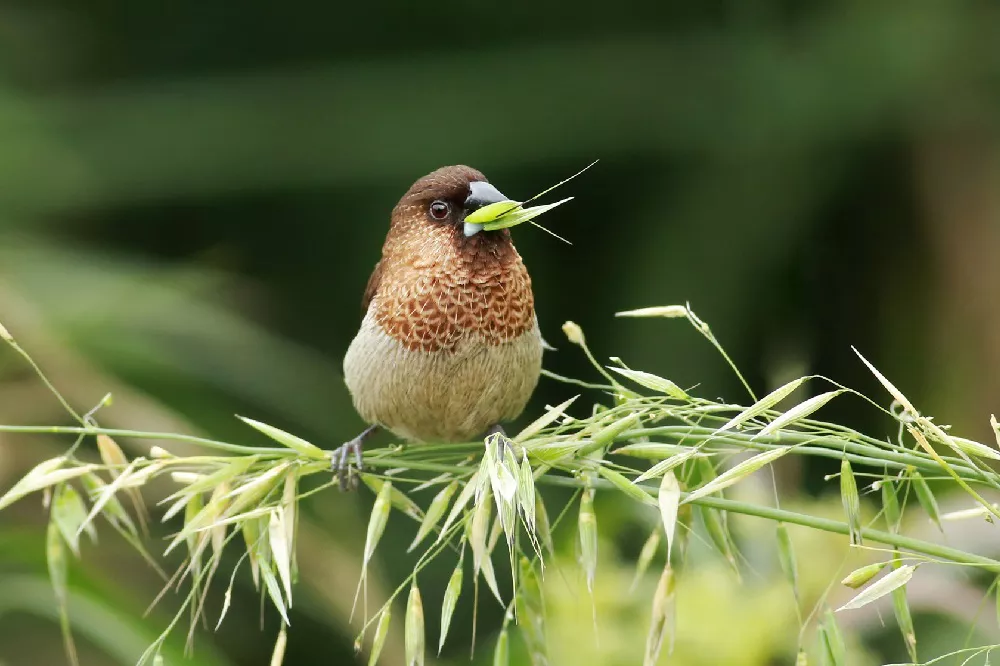Munias, also known as silverbills or finches, are small passerine birds that belong to the family Estrildidae. These birds are found in various parts of the world, and they are known for their colorful plumage and melodious songs. Among the many species of munias, the Javan Munia and the White-Rumped Munia are two of the most popular ones. In this article, we will take a closer look at these two species and highlight their differences.
Javan Munia (Lonchura leucogastroides)
The Javan Munia, also known as the chestnut munia or black-headed munia, is a small bird that is native to Southeast Asia. It is primarily found in Indonesia, Malaysia, and the Philippines. The bird measures about 11-12 cm in length and has a brownish-black head and neck, chestnut brown upperparts, and white underparts. The Javan Munia also has a short, conical beak, and its legs and feet are pinkish-brown in color.
One of the most striking features of the Javan Munia is its melodious song, which is often compared to that of canaries. The bird is also known for its active and playful behavior and is a popular choice for bird lovers and hobbyists.
White-Rumped Munia (Lonchura striata)
The White-Rumped Munia, also known as the white-rumped mannikin or white-rumped munia, is a small bird that is found in parts of Asia, including India, Pakistan, and Bangladesh. It measures about 10-11 cm in length and has a brownish-gray upper body and a white underbody. The bird also has a distinctive white rump, which is visible when it flies or perches on a branch. The White-Rumped Munia has a short, conical beak, and its legs and feet are brownish-gray in color.
Unlike the Javan Munia, the White-Rumped Munia is not known for its singing abilities. However, the bird is highly social and is often found in large flocks, especially during the breeding season. The White-Rumped Munia is also known for its adaptability and can thrive in a variety of habitats, including urban areas.
Differences between Javan Munia and White-Rumped Munia
While both the Javan Munia and the White-Rumped Munia belong to the same family of birds, there are several differences between the two species. Some of these differences include:
- 1. Size:
The Javan Munia is slightly larger than the White-Rumped Munia, measuring about 11-12 cm in length, while the latter measures about 10-11 cm.
- 2. Plumage:
The Javan Munia has a brownish-black head and neck, chestnut brown upperparts, and white underparts. In contrast, the White-Rumped Munia has a brownish-gray upper body and a white underbody. The bird also has a distinctive white rump, which is visible when it flies or perches on a branch.
- 3. Song:
The Javan Munia is known for its melodious song, which is often compared to that of canaries. The White-Rumped Munia, on the other hand, is not known for its singing abilities.
- 4. Range:
While the Javan Munia is primarily found in Southeast Asia, the White-Rumped Munia is found in parts of Asia, including India, Pakistan, and Bangladesh.
In summary, the Javan Munia and White-Rumped Munia are two species of small birds found in the Indian subcontinent and Southeast Asia. While they share some similarities in appearance and behavior, there are also key differences between the two. The Javan Munia has a black head with a white throat and a black patch on the belly, while the White-Rumped Munia has a white rump and a white patch behind the eye. Understanding these differences can help bird watchers and researchers differentiate between the two species in the field.
related topics


 Facebook
Facebook  Instagram
Instagram  Youtube
Youtube 